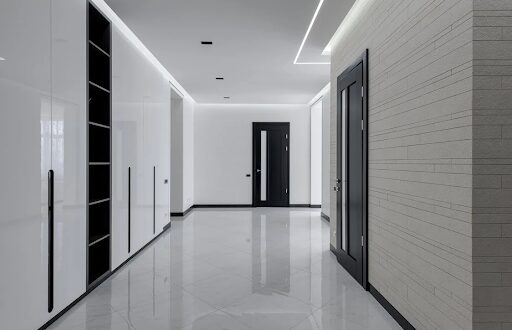Are LED strip lights safe to use? LED technology has been on the market for decades now but there are still some people who are not convinced that LED lights are safe. What does safety really mean in the context of LED strip lights? Can you cut LED strips? Do they pose a fire risk? Are they safe for children and pets? These questions and many more are answered in this article. Enjoy reading!
Table of Contents
What should we know about LED strip lights?
The abbreviation LED stands for “Light-Emitting Diode”. The simplest translation of this term is that LEDs can only emit light when an electric current passes through them. LED technology is the best thing that ever happened to the lighting market, as LED lights consume little energy compared to other traditional types.
An LED bulb and an incandescent light bulb are two totally different things. The latter has a glass enclosure containing tungsten filament (it’s worth adding that the filament is really fragile). When it comes to LEDs, there aren’t any filaments inside LED lights – there are two electrodes instead. With this, electricity passes through and is transformed into light by the semiconductor.
When it comes to LED strip lights, are flexible circuit boards populated with LEDs, which can be stuck practically everywhere. They are so flexible that they can be bent vertically up to ninety degrees! This is definitely the most flexible type of lighting. You can easily use such strip lights to add powerful lighting in many colors and brightnesses.
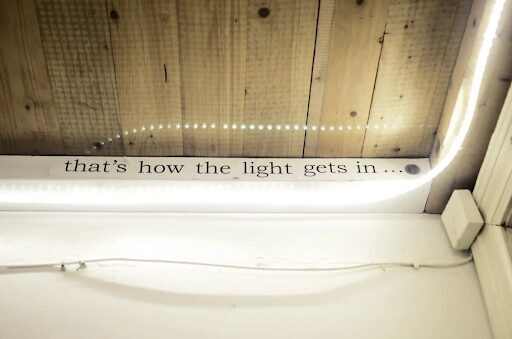
Can you cut LED strip lights?
The majority of LED strips available on the lighting market can be cut every one to four inches. It is extremely important to know where exactly you are cutting. Before you start making cuts, you ought to make sure that your strips are turned off and unplugged from any power source. Cutting LED strips will be safe if you keep in mind not to cut on a diode. You have to avoid cutting any of the connectors. LED strips usually have pre-marked cut lines to make your life easier.
Can your LED strips be connected or reconnected?
The answer is: yes, they can! What we all love LED tape lights for is their resiliency and ease of use. When you want to connect your strips together – you’re free to do it. When you want to reconnect your strips – nothing stands in a way to do it.
You don’t have to wonder if it’s safe or not. We ensure that such LED strips do not present a safety risk. You can cut them to reconnect them in different ways as long as you are certain that they are unplugged and powered off – we’ve mentioned it already in the previous paragraph. You can connect your strips with the use of strip-to-strip extensions, strip-to-strip connectors, and power cables.
It’s worth mentioning that there is one more method of connecting LED strips – soldering. However, it is only recommended for people with technical know-how. If you know where to start and how to do it with the necessary tools – you can try soldering. If not – you’d better choose some less dangerous methods.
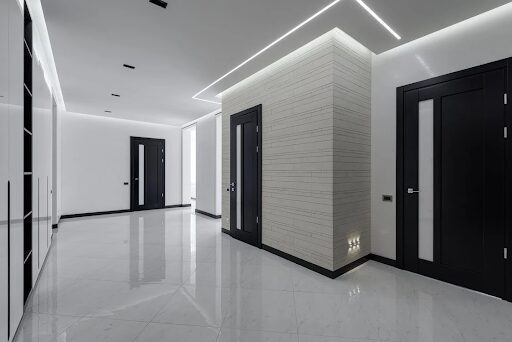
How many LED strip lights can be run together?
Hypothetically, you could run any number of strips together, since you have the adapters needed to handle all the wattage. A more realistic option is connecting two regular density strips together using just those two pieces and gapless pin connectors that allow you to make a continuous run of LED light – thanks to that, no gap will appear.
Nevertheless, if you would like to run high density strips together, it will be possible thanks to an LED amplifier. The same applies to running more than two regular density strips together. On the lighting market you can find LED adapters for both single-coloured and multicoloured LED strips. Let us point this out – the fact that you run all your strips together does not necessarily mean that your LED amplifier can handle the increased wattage of multiple strips. Make sure that your adapter can handle it!
Are LED strip lights safe for eyes?
LED lights do emit blue light. Some studies say that this blue light is phototoxic, meaning that it can strain the eyes. We must admit that too much blue light is not good for the human body – especially for human eyes. However, you do not have to completely give it up. You should limit blue light exposure, and by limiting we mean avoiding using LEDs right before going to sleep.
It’s worth noting that blue light is all around us. The sun emits blue light. Fluorescent lights emit blue light. And guess what? Incandescent bulbs emit blue light, too! There’s one thing you can do – try not to spend too many evening hours being exposed to blue light, as it can be a reason for poor sleep and eye problems, such as a decline in visual acuity, visual fatigue, and macular degeneration. The rule is simple – the less blue light before going to sleep, the better.
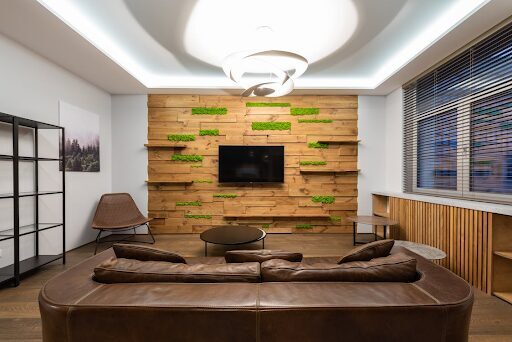
Do LED strips pose a fire risk? Are they fire hazards?
The risk of fire with strip lights is extremely low, especially when you choose the best quality lights. You should avoid poorly made lights of dubious quality which are far from being safe. Do not be tempted by suspiciously low prices. Cheaper lights can have flaws such as worn, broken, or fraying wiring. Using such defective products may be dangerous. Don’t put yourself in danger.
Use the right lights for the chosen application. The risk of fire is negligible, but with the best quality lights, the probability of the occurrence of fire drops to almost zero. It’s up to you whether you’ll minimize the already minimal fire risk or not. Remember that there are LED strip lights for indoor and outdoor use. There are waterproof and water-resistant lights. Choose the ones that are tailored to your needs and preferences.
How to carry out the LED strip light installation in the safest way?
Above all, the most important thing for you is to create a detailed and safe plan of action. Before you start installing, you ought to assess your material needs – you will certainly need a self-adhesive backing and a few more things. Remember not to connect too many strips together – you can only connect together the exact recommended number of strips.
Making sure that you have a sufficient number of caps and connectors is also necessary. Another tip is not to install LEDs on a flammable surface. Keep in mind not to place any makeshift material under your lights. Act in accordance with the instructions and the process of installing will be completely safe.
How to mount LED strips safely?
One of the most convenient aspects of LED strip lights is the fact that they come with a self-adhesive backing, which adds to the usefulness of this lighting solution. Thanks to this, you can easily install LED strips in your home. You just need to decide where you want to install your strip lights, remove the securing tape and place the strip on the desired surface. You could possibly use complete accessory kits with spools of strip lights of any desired length in one set. Using duct tape, staples, or nails in order to apply the lights isn’t the best idea.
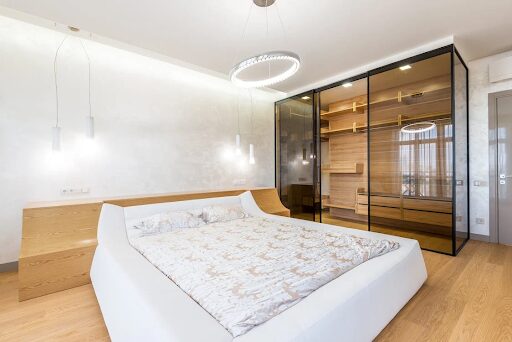
Are LED strip lights safe for children and animals?
If you have children and pets, and you are unsure whether to use LED strips or not, don’t hesitate anymore – they are 100% safe for home applications, as long as you make sure that there are no trailing cords and dangling connectors. Eliminate the tripping hazard. Get rid of anything that could be interesting for children, especially toddlers who are curious about the world. Uninstalled lighting spools should also be kept away from the little ones.
Generally speaking, LEDs are considered an environmentally friendly and “green” lighting option, taking into account that they are made only with non-toxic materials. However, many people used to believe that domestic animals see a strobe effect from LEDs which is not visible to humans. The most sensible solution for pets would be to avoid prolonged exposure to LED lights, even if concerns about LED strips are considered really minimal. To conclude on this point, you don’t have to worry that much about your furry family members – they are safe.
Are LED strip lights safe to leave on?
When you were younger, you might have heard “Turn the lights off before going outside!” multiple times. But how does this relate to today’s LED technology? We already know that LED lights are energy-efficient, long-lasting, and cost-effective. Does that mean that it’s okay to leave LED strip lights on all the time, 24/7? The truth is that you can leave your strips on and nothing will go wrong. Leaving LEDs on is not dangerous in any way. However, we recommend not leaving them on if it’s not necessary.
You should not keep LED strips on all the time for two reasons. Firstly, the longer you leave your lights on, the more you’ll have to pay for your electric bill – it is worth paying attention to, even if LEDs are characterized by energy efficiency and cost-effectiveness. And secondly, you shouldn’t leave your LEDs – not only LED strip lights but generally all sorts of LEDs – on if you want to be a good citizen.
Please remember that wasted energy adds up fast – if you want to take care of our planet Earth, you’ll do anything to minimize the negative impact on the environment. Summing up, leaving LED lights on isn’t dangerous, but at the same time, it isn’t reasonable and environmentally friendly at all.
Are LED strip lights waterproof?
The answer to this question is not straightforward – some LED strips are waterproof, and others are not. It all depends on the IP ─ Ingress Protection ratings. IPX0 means no protection against moisture, and IPX8 stands for 100% protection against immersion. IP43 rating means that your strips are protected against spraying water or rain. IP44 is considered splashproof.
LED strips with an IP65 rating can resist general humidity, but they won’t survive underwater. IP67 and IP68 ratings are ideal for outdoor use due to their waterproof capabilities – if you’re looking for the safest waterproof LED strip lights, you ought to choose them. You can easily submerge them underwater and turn them on. Inappropriate product selection may be synonymous with putting yourself in danger – choose wisely!
Summary
It turns out that LED strip lights are really safe. You can cut them. They aren’t as unsafe for the eyes as some would think. It’s worth remembering about one golden rule – enough is enough. Too much of anything isn’t good. What’s more, LED strips DO NOT pose a fire risk. If you install and mount LED strips in a reasonable and desired way, they will be safe for little ones and domestic animals. LEDs are safe to leave on, but we definitely do not recommend such a solution. And finally – LED strips can be waterproof, but we have to buy the right ones, with a high IP rating. Take care of your safety!
 World Magazine 2024
World Magazine 2024
